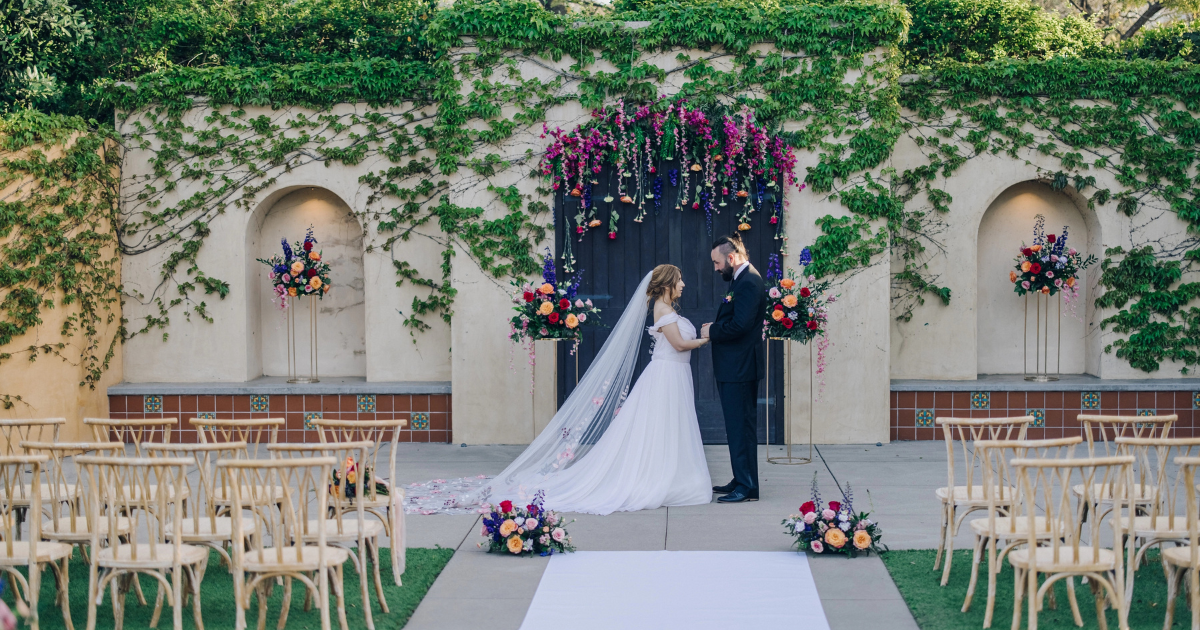
How to Keep Your Cathedral Veil Secure
|
Time to read 3 min
|
Time to read 3 min
How does a cathedral veil stay on when it measures an impressive 118 to 180 inches long? As a bridal veil maker, we've seen countless brides worry about this question while falling in love with these stunning veils.
Cathedral veils are certainly a nod to tradition and act as a magnificent extension of your wedding dress. However, their remarkable length—starting from 118 inches/300cm for standard cathedral veils and extending to 180 inches/457cm for royal cathedral options—can make them seem challenging to secure. Fortunately, keeping a cathedral veil in place is surprisingly simple. You'll just need some bobby pins and a little preparation.
In this guide, we'll share expert tips on selecting the right base for your veil, securing it properly, and even how to move gracefully with this stunning bridal accessory.
The foundation of your veil security starts with selecting the proper attachment method. Metal combs reign as the most popular choice for cathedral veils because they offer exceptional stability without bulk. These lightweight anchors grip hair effectively and won't break even under stress. Metal combs also come in various finishes—silver, gold, rose gold, or black—allowing you to coordinate with your jewelry or choose something discreet.
For brides with shorter hair (bobs or pixie cuts), alligator clips provide a more secure foundation. Their curved structure creates a firm grip on both sides of your hair, preventing slippage throughout your celebration.
Contrary to common belief, you can absolutely wear a cathedral veil with completely loose hair. This approach requires extra support—your stylist can create a hidden foundation under your hair or use the "criss-cross bobby pin" technique to establish a secure anchor point.
Placement matters too. You might position your veil:
Regardless of style, remember that cathedral veils need a particularly secure base due to their weight and length.
Securing a cathedral veil requires strategic techniques that work with your hairstyle. First thing to remember, metal combs provide superior hold compared to plastic ones since they're stronger, sturdier, flexible, and lightweight.
For maximum stability, try these proven methods:
Create the "X-formation" - Position bobby pins in a crisscross pattern over the comb's base or weave U-pins through the teeth. This locked "X" pattern forms the most secure hold possible.
Build a hidden foundation - For slippery or fine hair, establish a sturdy anchor point under your crown section. Options include:
Apply the layered approach - Secure the veil first, then position any headpiece on top for a seamless finish.
Notably, outdoor weddings require extra precautions. Consider veil weights—small magnets hidden inside glistening pearls that grip tulle securely without tearing. These discreet weights prevent your veil from blowing dramatically during breezy moments or clifftop photo sessions.
Above all, practice with your veil before the wedding day. Show a trusted bridesmaid how to remove it gently if you plan to take it off after the ceremony.
Wearing a cathedral veil with confidence requires practice and preparation. Once securely attached, mastering movement becomes your next priority. In essence, this flowing extension of your bridal look demands thoughtful navigation throughout your special day.
Practice is essential—walk with your veil before the wedding to become familiar with its flow and weight. This becomes even more crucial if your veil extends beyond your dress train. Moreover, inspect your venue for potential hazards like uneven floors or protruding elements that might catch delicate tulle.
For this reason, designate a trusted bridesmaid to assist with your veil, especially during key moments like walking the aisle or posing for photographs. Their help ensures your veil remains perfectly arranged without you needing to worry.
Outdoor weddings present unique challenges—primarily wind and uneven terrain. Consider these practical solutions:
After all, most brides wear cathedral veils only during the ceremony and formal photos. Afterward, consider removing it entirely or switching to a shorter version for unrestricted movement at your reception.
Cathedral veils undoubtedly create a breathtaking bridal look, despite their impressive length and potential challenges. Throughout this guide, we've explored the essentials of keeping these stunning accessories secure and manageable on your special day.
With these expert techniques and a little preparation, you'll feel confident and secure wearing this timeless bridal accessory. Your cathedral veil will stay perfectly in place while you focus on what truly matters - celebrating your wedding day.

